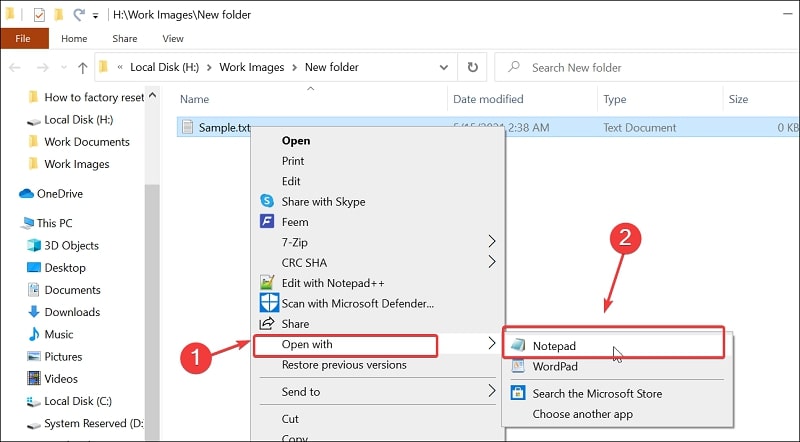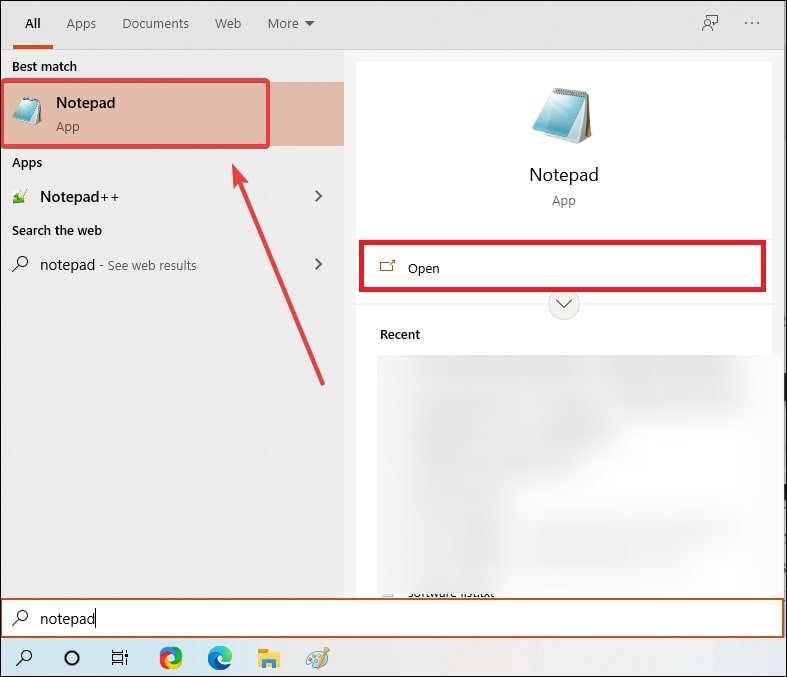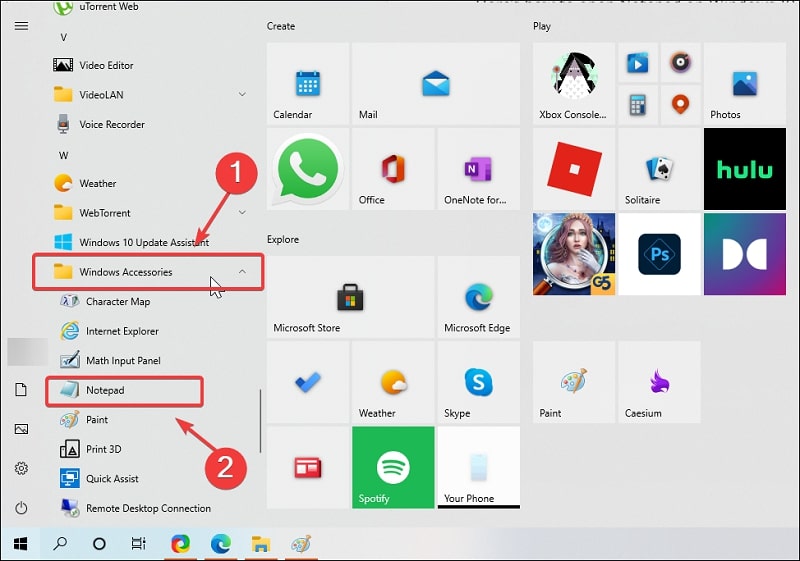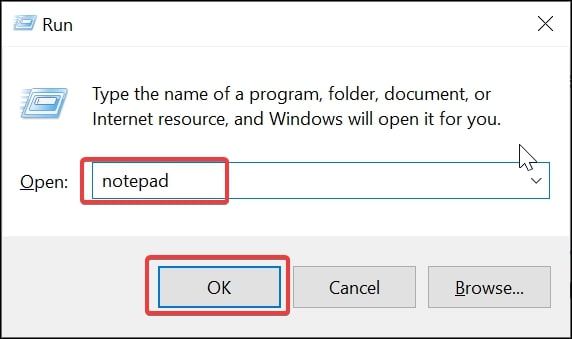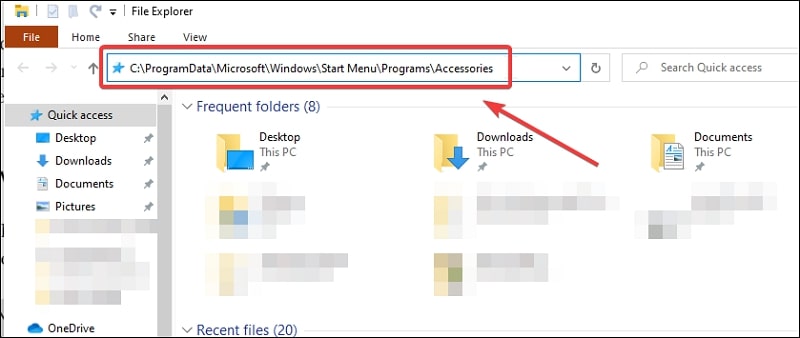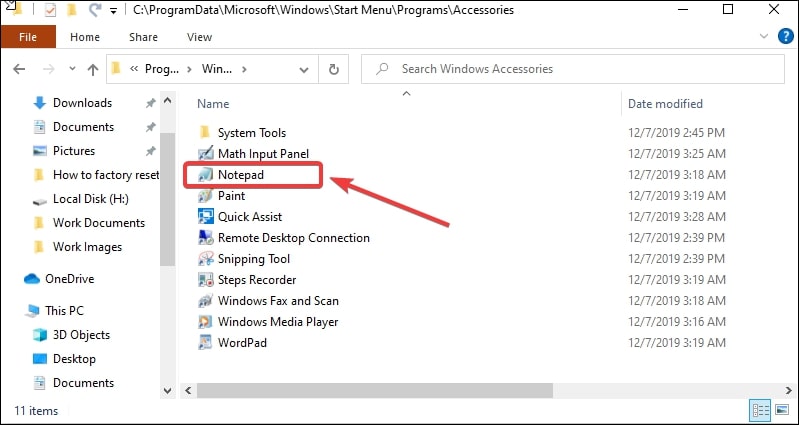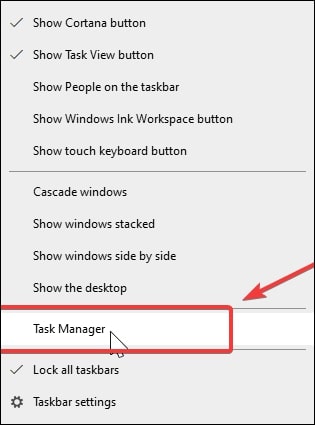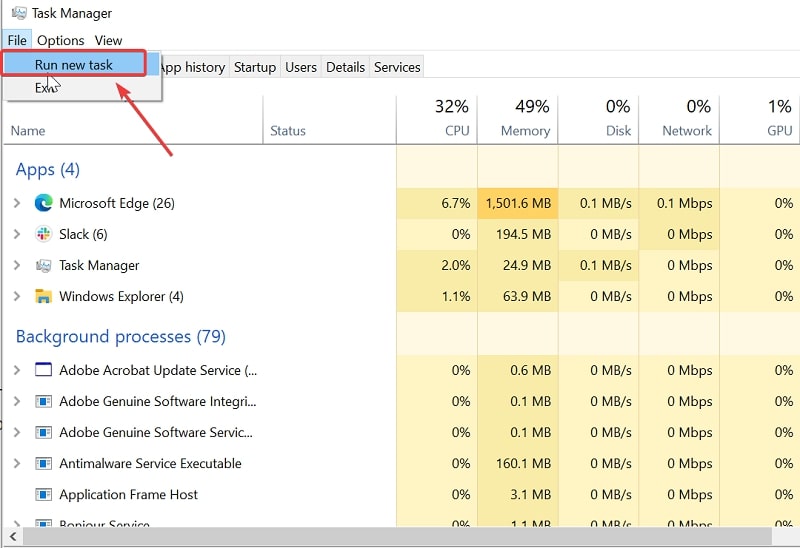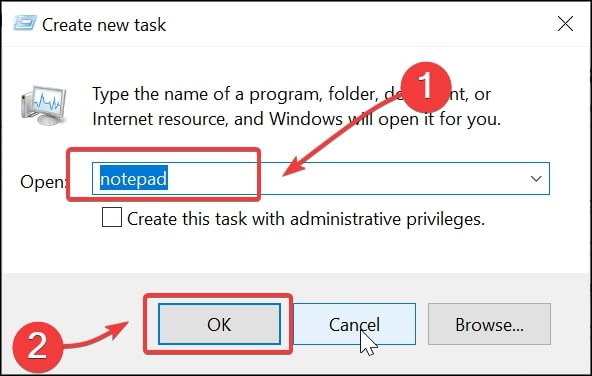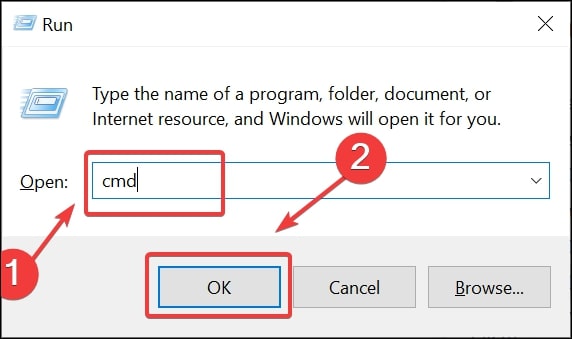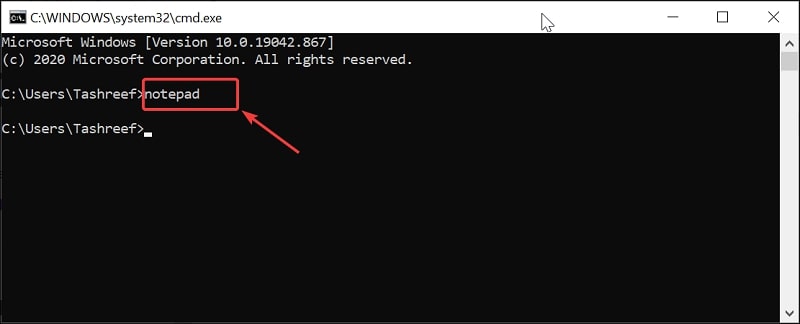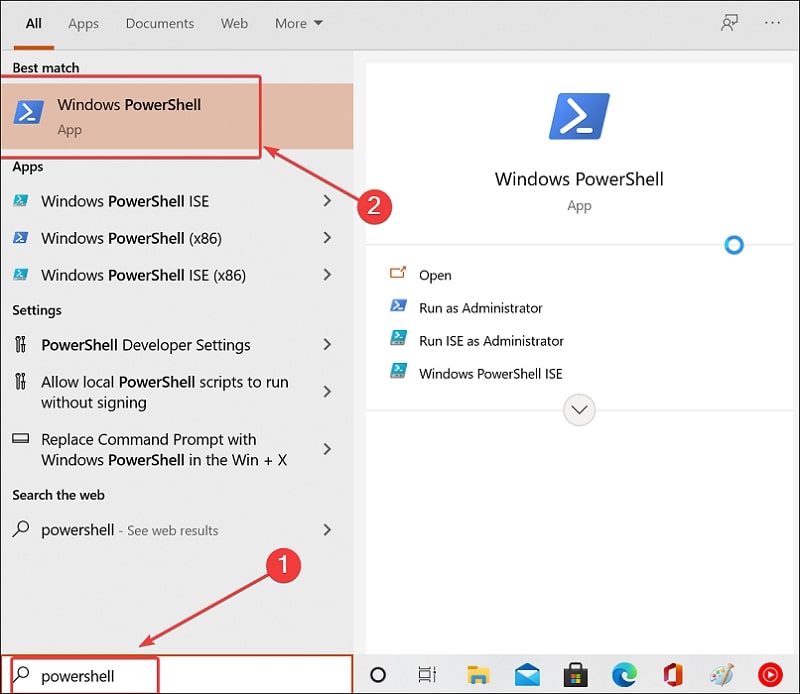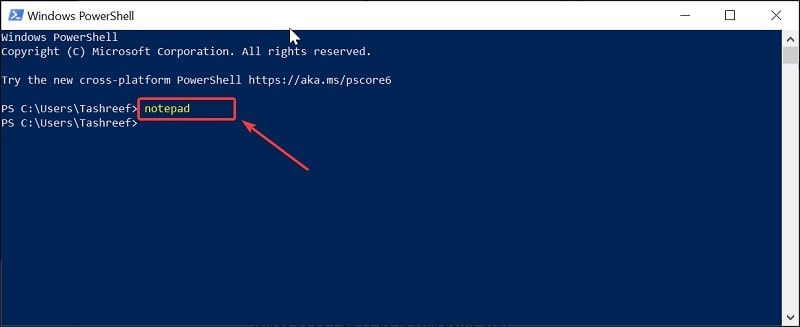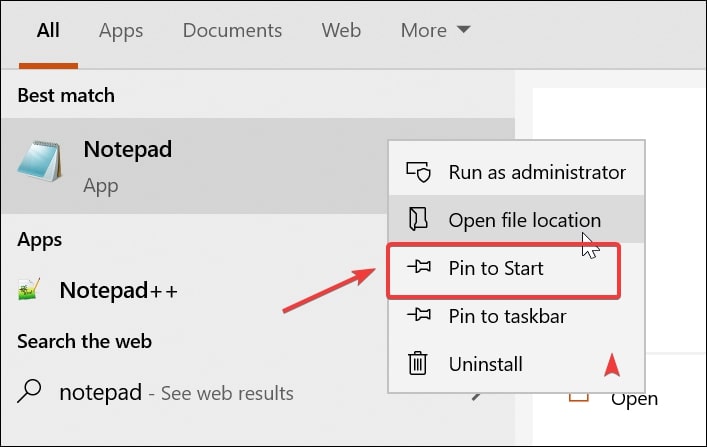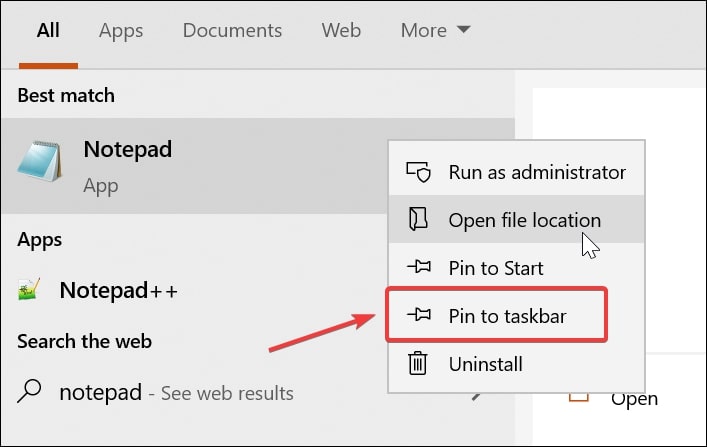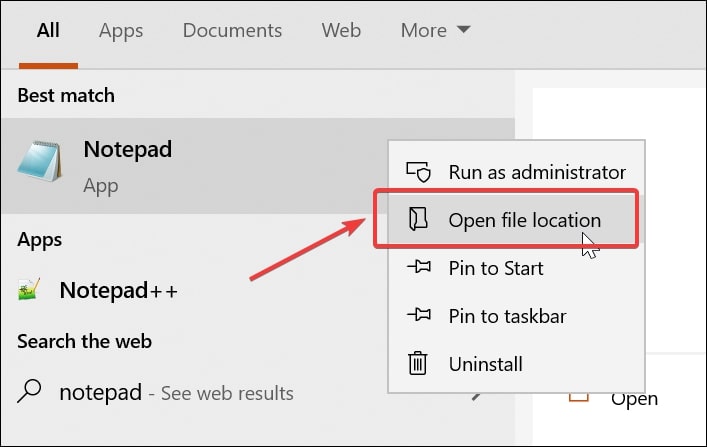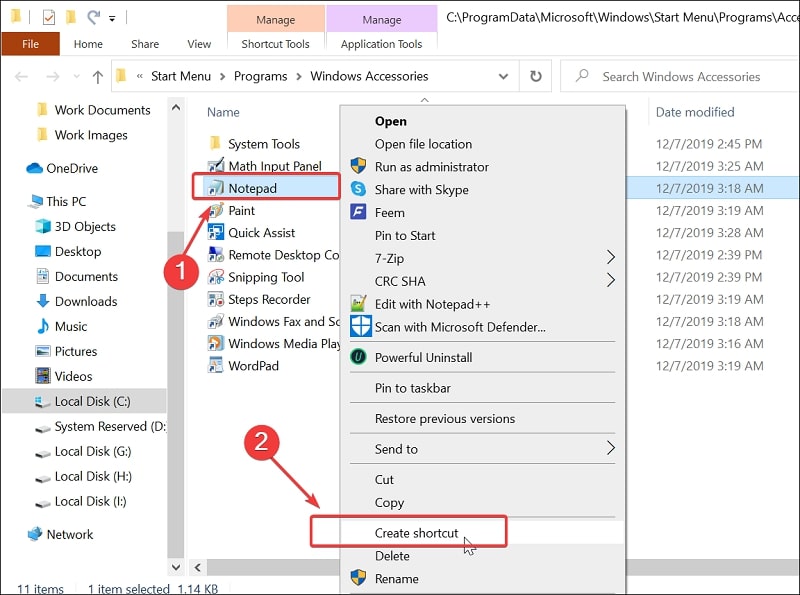Notepad is a popular text editor that comes pre-installed in almost all Windows installations, including Windows 10. While several popular text editors are available to choose from, such as Notepad++ with better features, Notepad has stood the test of the time. It is simple, fast, and works.
Opening the Notepad is easy; you can click the Start button, search it on the Windows search bar and open it from the results. However, what if you can’t find it in the search or the search bar is not working? Well, there are multiple ways to open Notepad on Windows 10.
Today, in this article, we have listed 9 ways to open Notepad on Windows 10, including keyboard shortcuts, context menu, Cortana, and more.
Method 1. Open a Text File in Notepad Windows 10
If you want to open a text file in Notepad, all you have to do is double-click on the file, and it will open in Notepad. The default app to open .txt files is set to Notepad, so you don’t have to open the text editor first and then load the text file.
If the default app to open a text file is not set to Notepad, you can select it manually.
Right-click on the text file you want to open in the text editor, choose Open with, and then choose Notepad from the list.
Method 2. Open Notepad on Windows 10 By Searching
If you want to open a blank or new text file, the easiest way to open Notepad on Windows 10 is through search.
Step 1: Press the Windows key to bring up the search bar.
Step 2: In the search bar, type Notepad. From the search results, click on Notepad to open the app.
Method 3. Open Notepad on Windows 10 from the Start Menu
Another great place to find installed apps on your PC is to check Windows 10 Start menu. The Start menu shows all the apps installed on your computer. All the apps are usually sorted alphabetically.
However, apps like Notepad are usually tucked inside Microsoft’s Accessories folder. Here’s how to open Notepad on Windows 10 from the Start Menu.
Step 1. Click the Start button on your desktop.
Step 2: As the Start menu pops up, scroll down and locate the Microsoft Accessories folder.
Step 3: Expand the Windows Accessories folder. Next, click on Notepad to open the app.
Method 4. Open Notepad on Windows 10 via the Run Window
If you are a power user or use a few apps frequently, clicking on the app icon from the desktop to launch it every time may feel inconvenient. The Run box in Windows can help you open many apps with a single command, including Notepad.
Step 1: Press the Windows key + R on your keyboard. This will open the Run dialogue box.
Step 2: Type notepad in the Run box and click OK. This will open the Notepad.
Method 5. Open Notepad on Windows 10 by Using File Explorer
If you have deleted the Notepad desktop shortcut and can’t seem to find the app in the search or Start menu, File Explorer can help. All the Windows apps are installed in a directory from where you can launch the apps directly.
Step 1: Press the Windows key + E on your keyboard to open File Explorer.
Step 2: In File Explorer, navigate to the following location. You can also copy and paste the following path.
C:\ProgramData\Microsoft\Windows\Start Menu\Programs\Accessories
Step 3: Double-click on the Notepad app to open it.
Method 6. Open Notepad on Windows 10 by Using Task Manager
Task Manager is a useful utility that allows you to manage running tasks, check resource usage and manage startup apps. However, one lesser-known Task Manager feature is that you can use it to launch new tasks such as the Notepad app.
Step 1. Right-click on the taskbar and choose Task Manager from the context menu.
Step 2: In the Task Manager, click on File. Then choose New Task from the options. This will open the Create new task dialog box.
Step 3: Type notepad in the Create new task box and click OK to open the app.
Check the Create this task with administrative privileges to open the app with administrator rights.
Method 7. Open Notepad on Windows 10 via Command Prompt
If you work with Command Prompt extensively, you can use it to open the Notepad app as well. Here’s how to do it.
Step 1: Press the Windows key + R to open the Run dialog box.
Step 2: In the Run dialog box, type cmd and click OK. This will open the Command Prompt.
Step 3: In the Command Prompt window, type notepad and hit Enter. Command Prompt will open the Notepad.
Method 8: Open Notepad on Windows 10 via Windows PowerShell
You can also achieve this with Windows PowerShell. First, launch the Microsoft shell, type the notepad command, hit enter to open the Notepad on Windows 10. This is useful as PowerShell is more widely used than Command Prompt.
Step 1: Press the Windows key on your keyboard to bring up the Cortana search bar. Type PowerShell in the search bar.
Step 2: Click on the PowerShell app to open it. In the PowerShell window, type notepad and hit Enter.
Step 3: This will open the Notepad app in an instant.
Method 9. Create a Shortcut for Notepad Windows 10
App shortcuts on the desktop are the easiest ways to launch and manage frequently used apps on your computer. Since the Notepad desktop shortcut is not available by default, here’s how to create one.
Step 1: Click Start to open the search bar. In the search bar, type notepad.
Step 2: Right-click on the Notepad app from the search result. Choose Pin to Taskbar if you want the shortcut to appear on the taskbar. Else, choose Pin to Start. This will show the app shortcut in the Start menu.
As you may have noticed, there is no create a desktop shortcut option. To achieve this, right-click on the Notepad app from the search bar and choose Open File Location.
In File Explorer, right-click on the Notepad shortcut and choose Create Shortcut.
When the prompt “Windows can’t create a shortcut here, Do you want the shortcut to be placed on the desktop instead” appears, click Yes to add a shortcut to the desktop. A Notepad desktop shortcut will be added to your desktop.
FAQs
What is the shortcut key to open Notepad?
To create a Notepad shortcut key, go to Start > Windows Accessories. Then, right-click on the Notepad app and choose Open File Location. Right-click on Notepad.exe and choose Properties. In the Shortcut tab, click the Shortcut key field and press any key on your keyboard.
Why is Notepad not opening?
Your Notepad app may stop working due to a third-party software conflict, system file corruption, bad Windows update, and incorrect app default configuration.
How do I make my Notepad default text editor?
To set up Notepad as the default text editor, go to Start > Settings > Apps > Default Apps > Choose default apps by file type. Click on the .txt type and choose Notepad.
How do I fix it if the Notepad is not responding?
If the Notepad is not responding, run the exe file directly from the installation folder, reboot your PC and check your default text editor.
Conclusion
Windows 10 Notepad may be a basic text editor, but it can help you write or edit HTML and other codes. This can also prepare you to upgrade to more advanced text editors such as Notepad++.
If you have recently upgraded to Windows 10 and find it difficult to locate the Notepad app on your PC, there are several ways to do it.
The easiest way to open a Notepad is to use the Run box. Alternatively, you can also use the Cortana search bar, Task Manager, and even the File Explorer to open Notepad in Windows 10.

